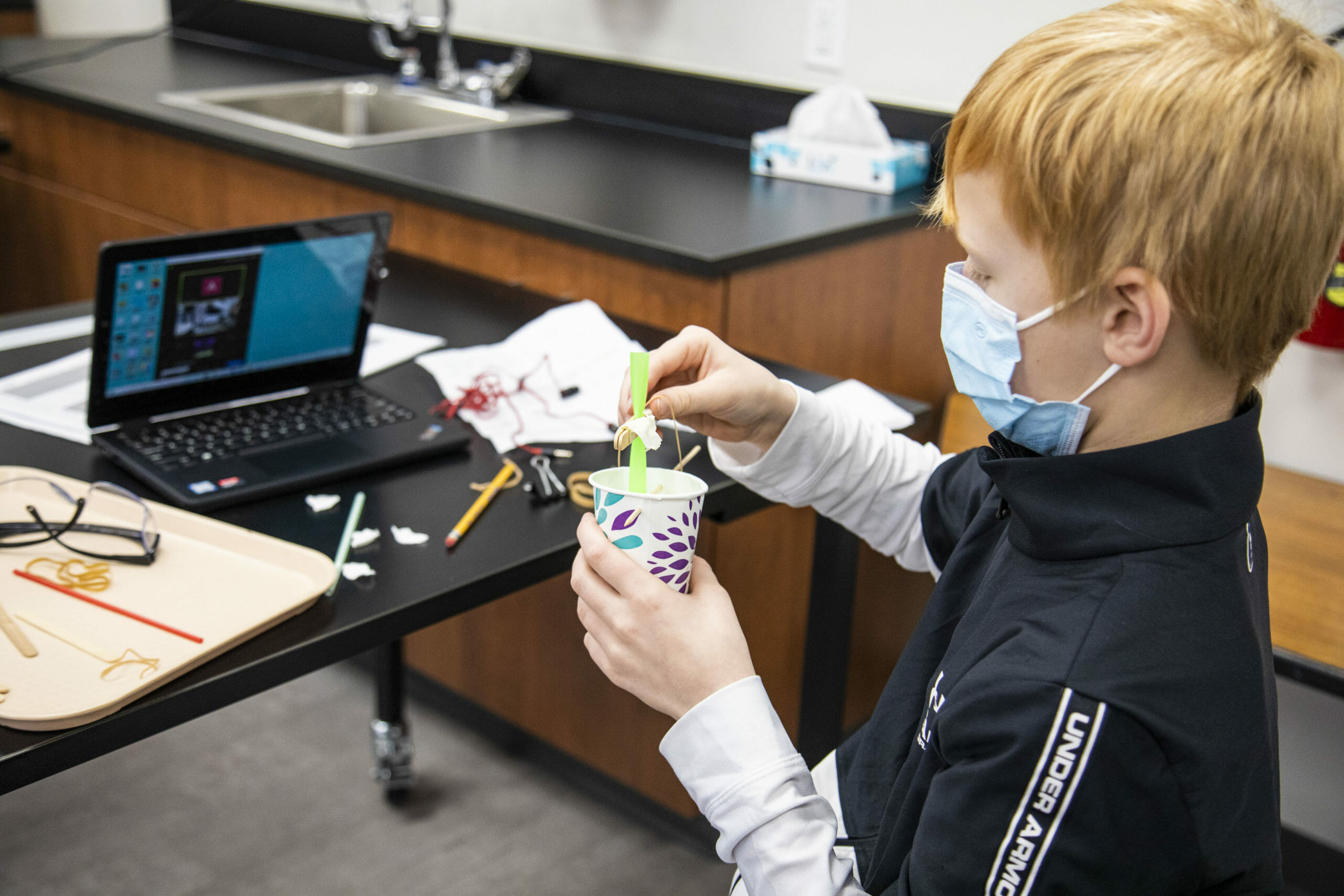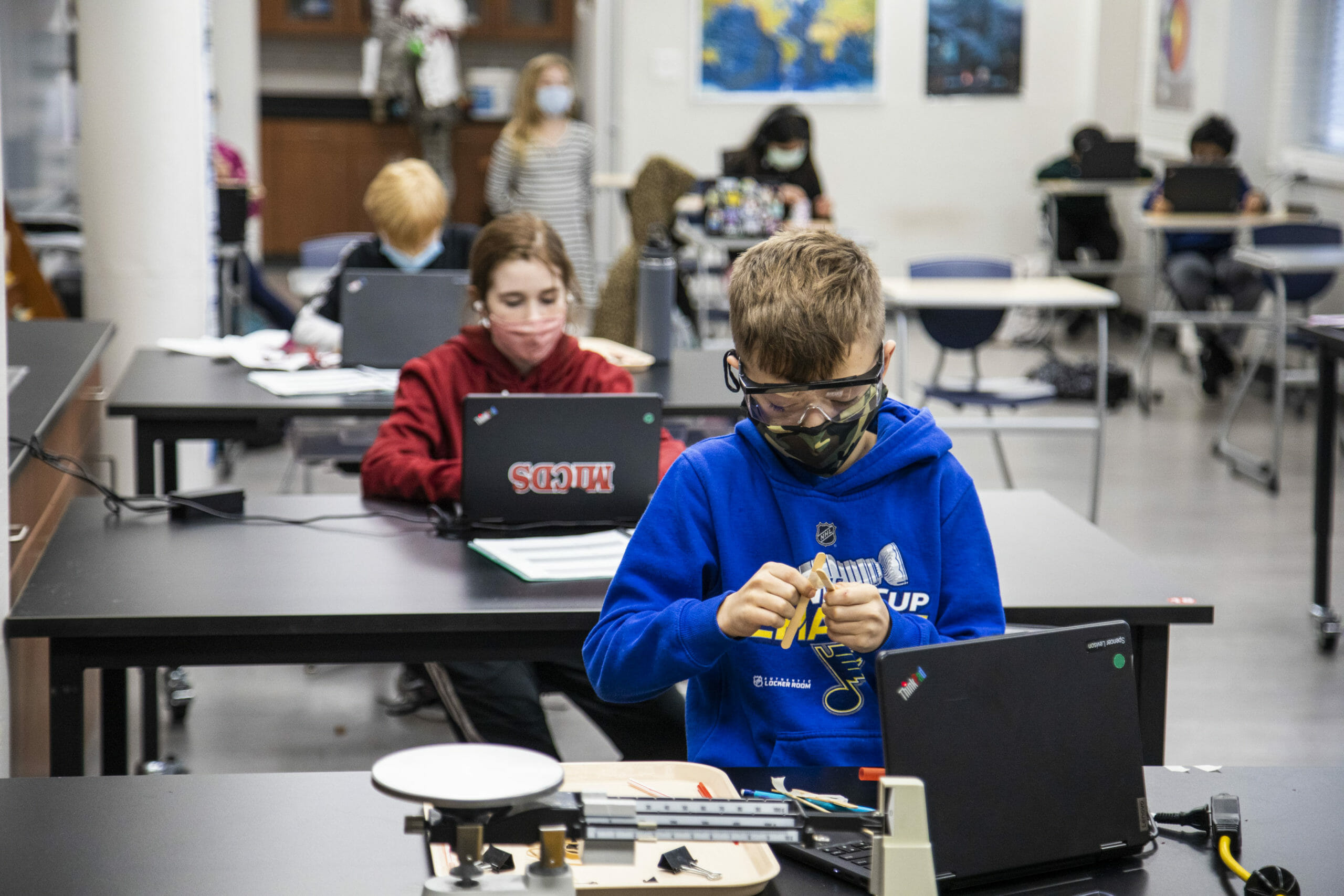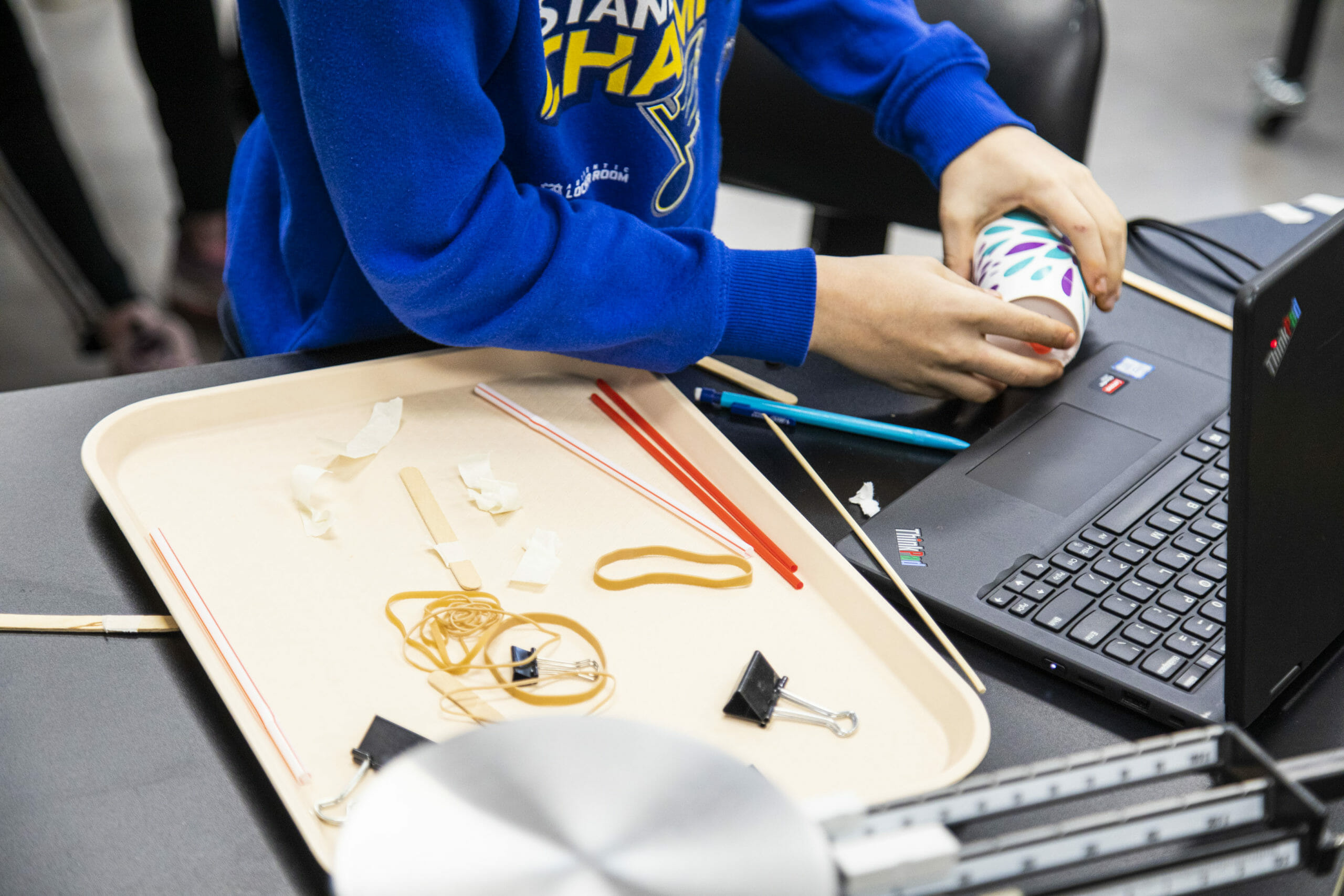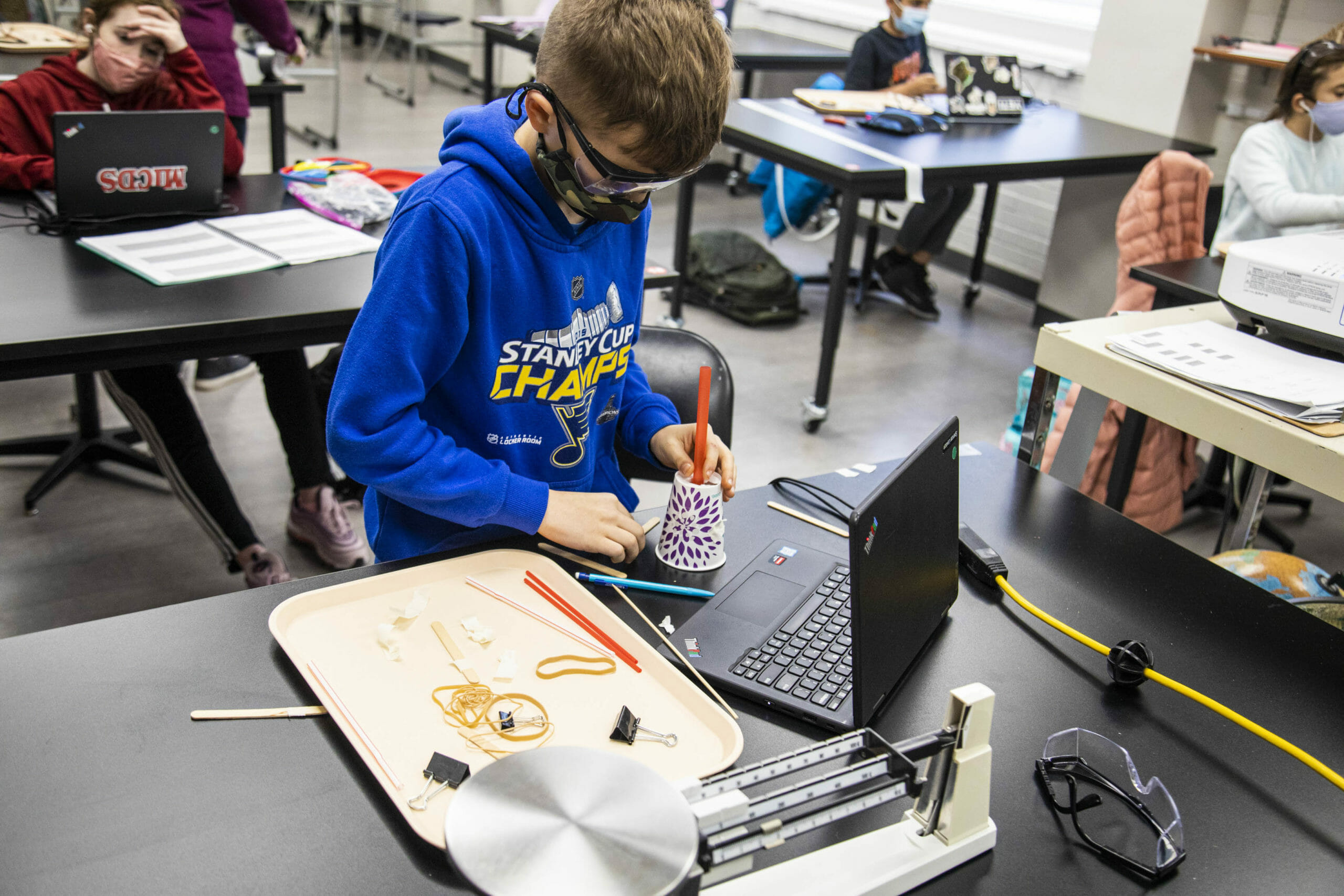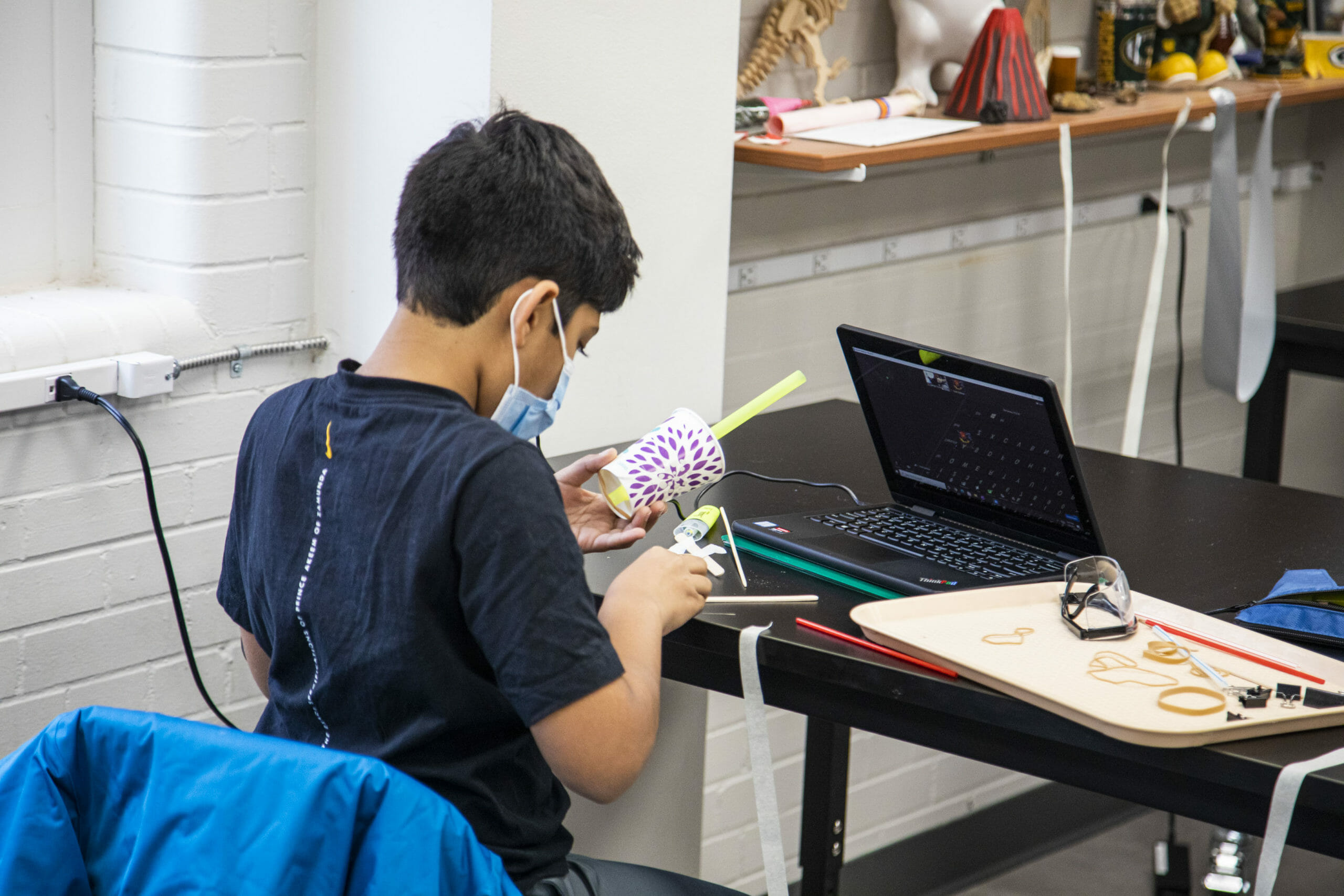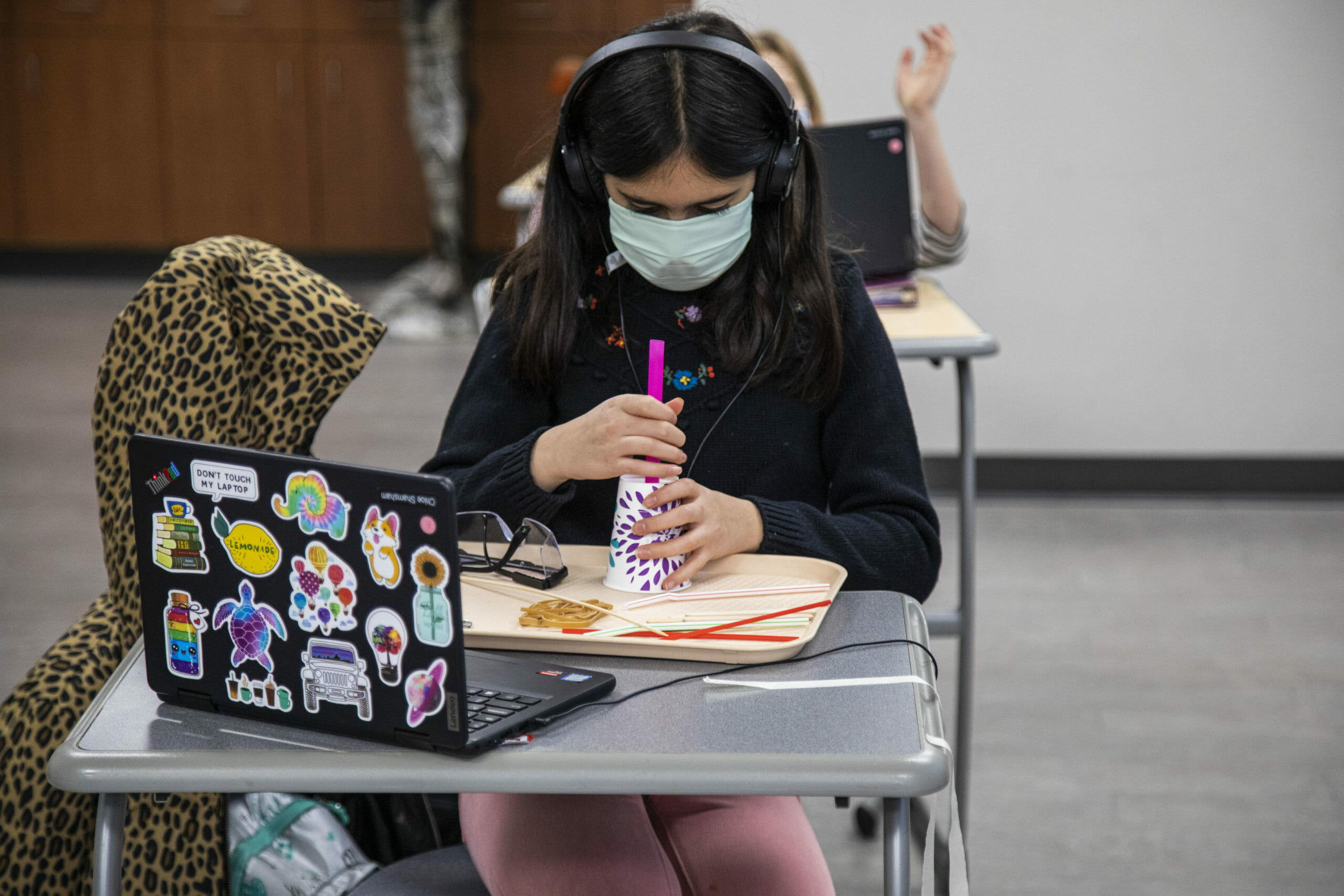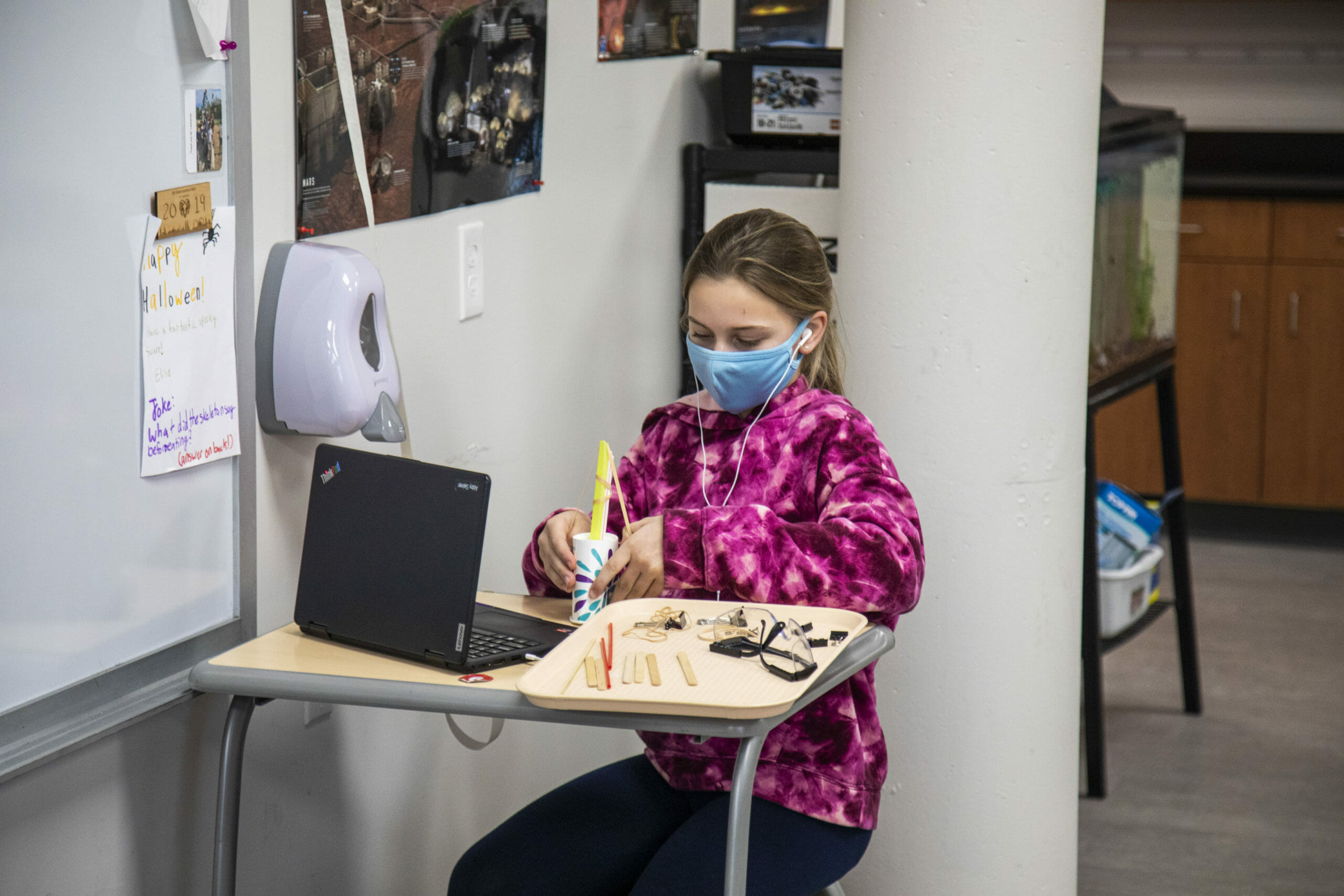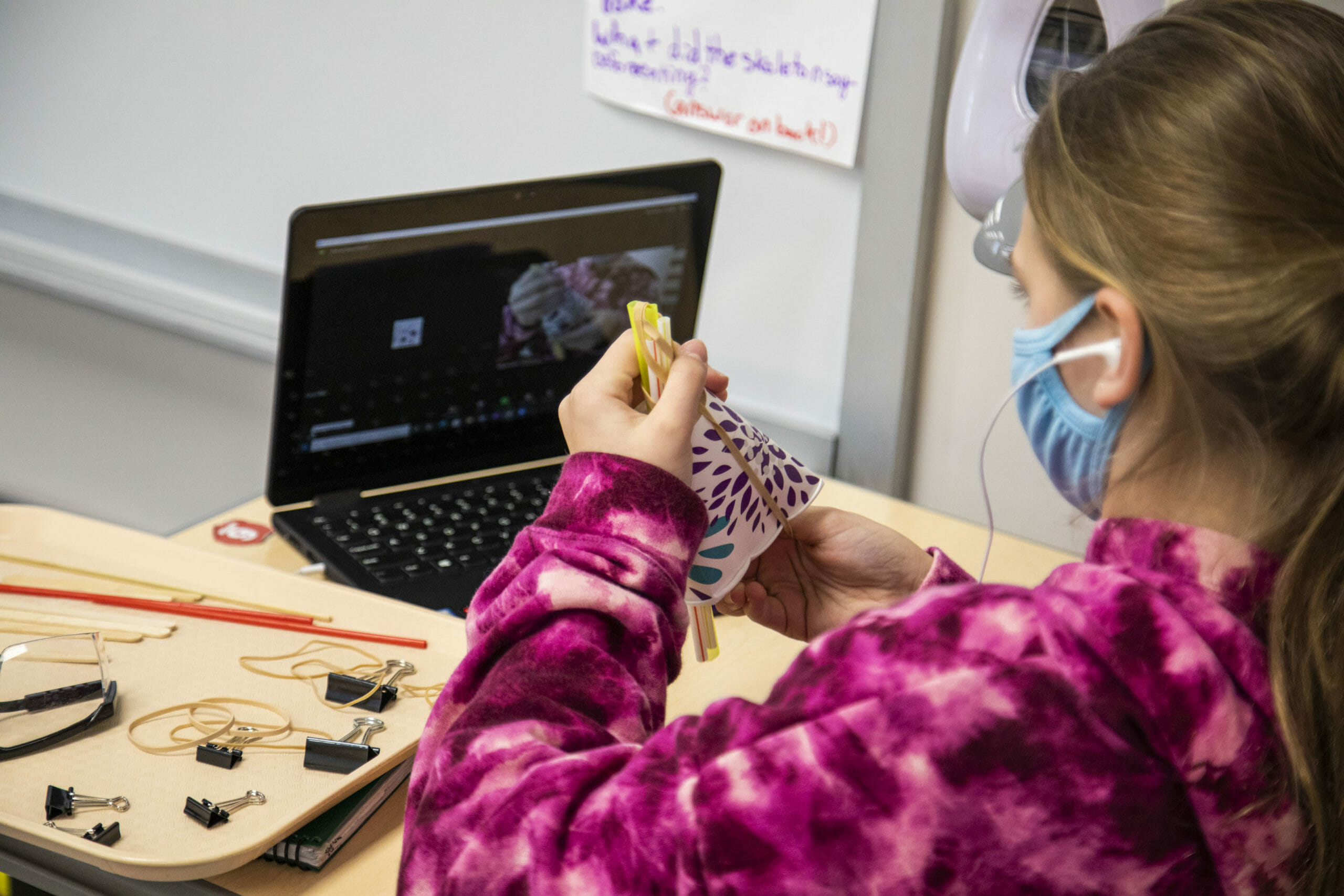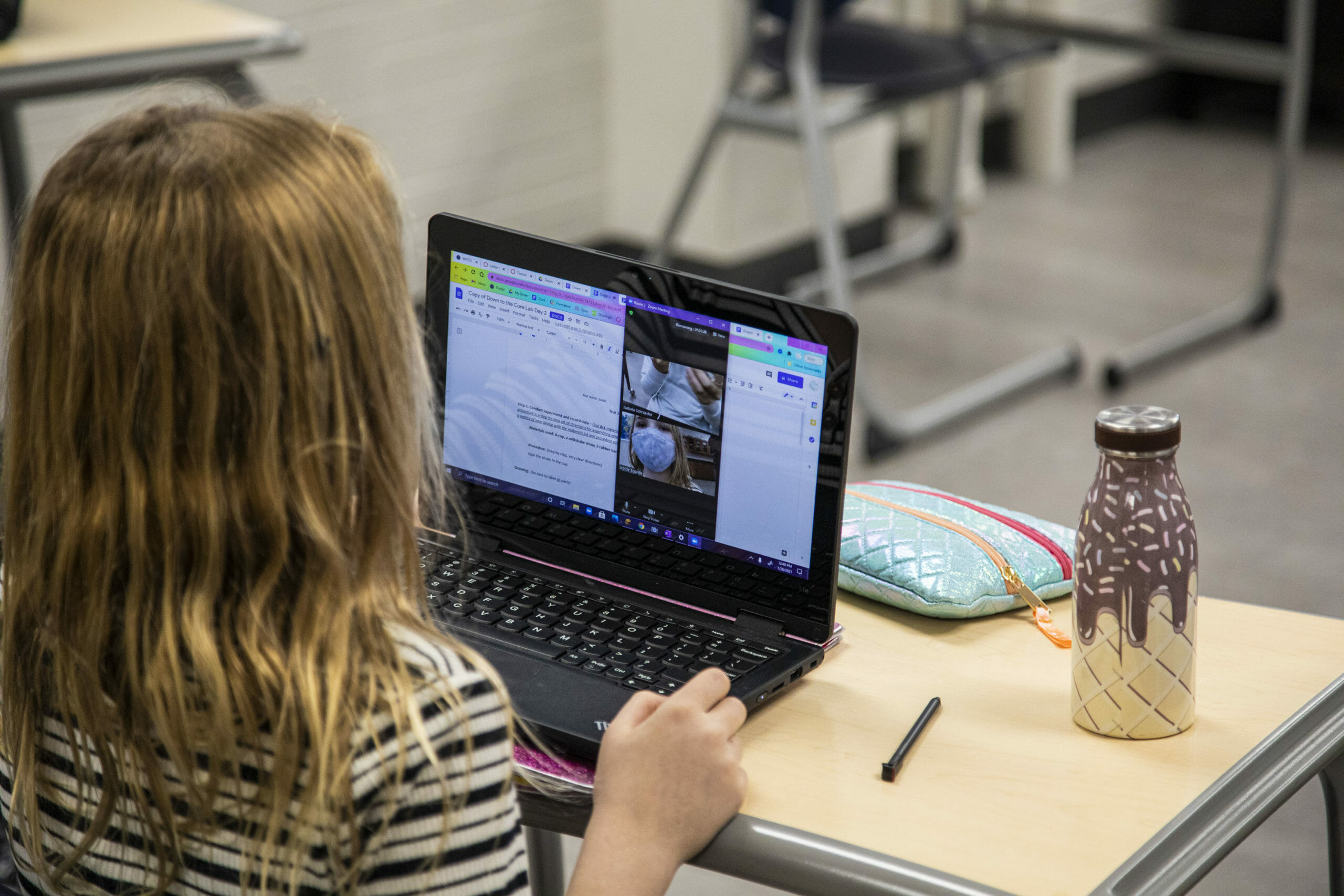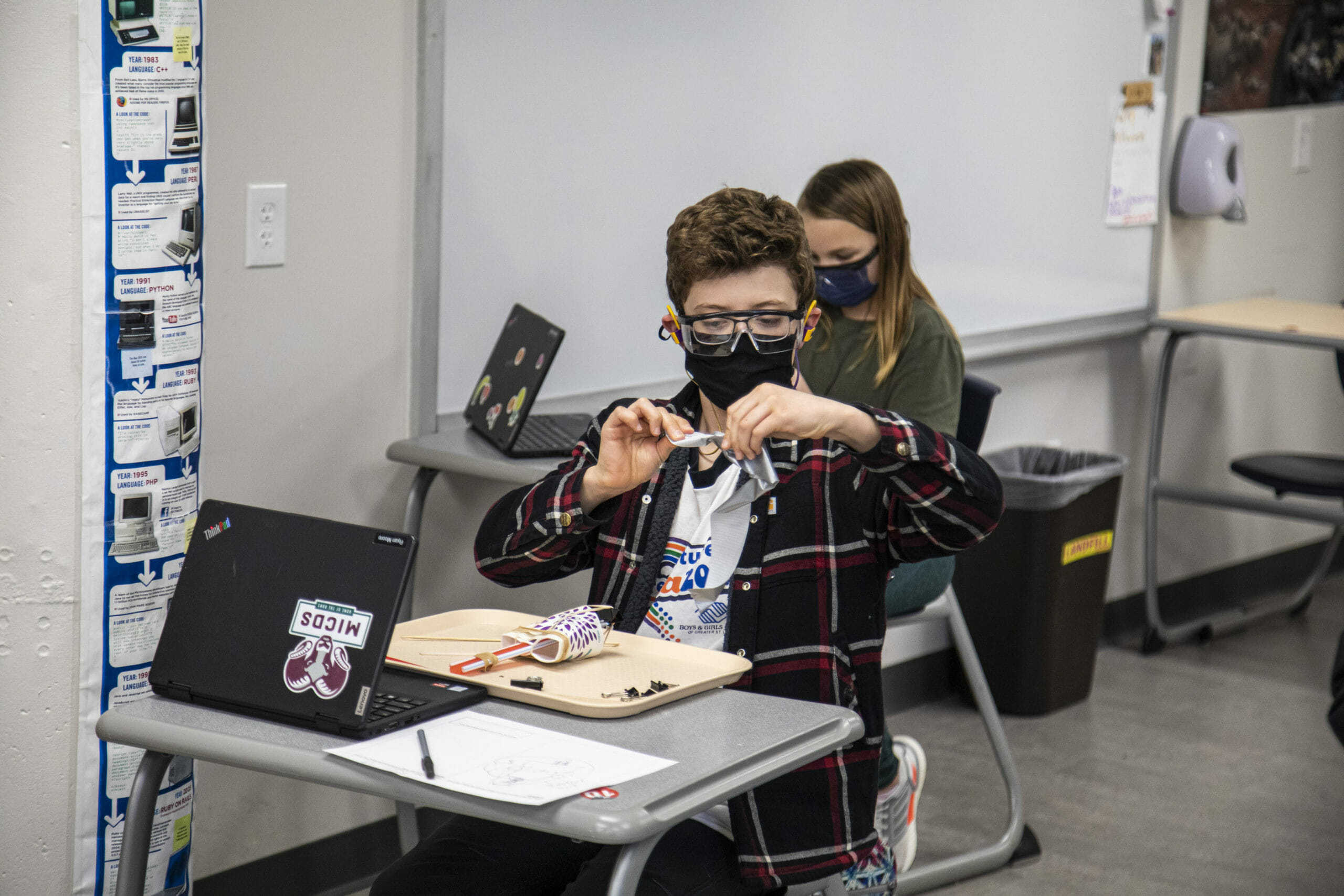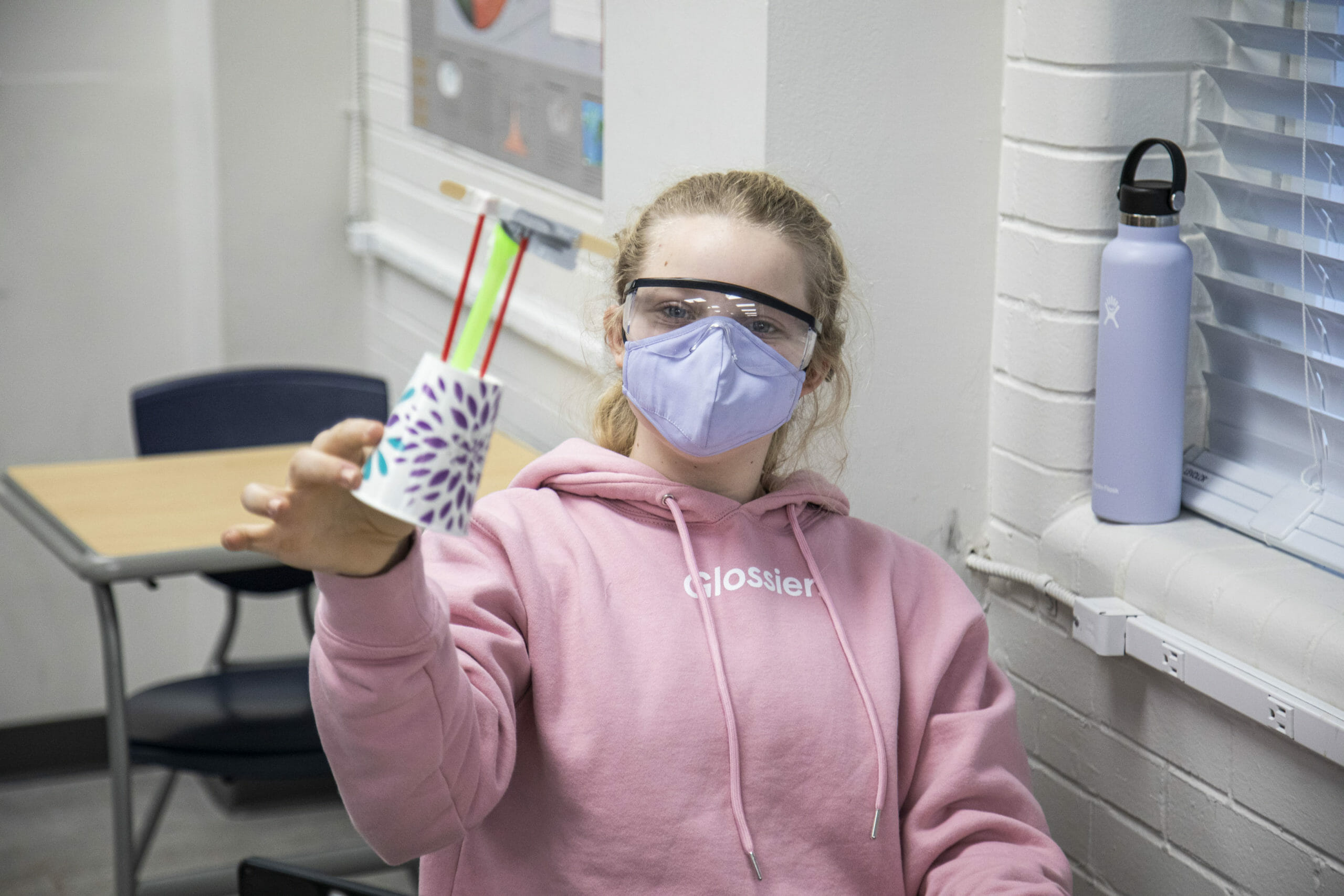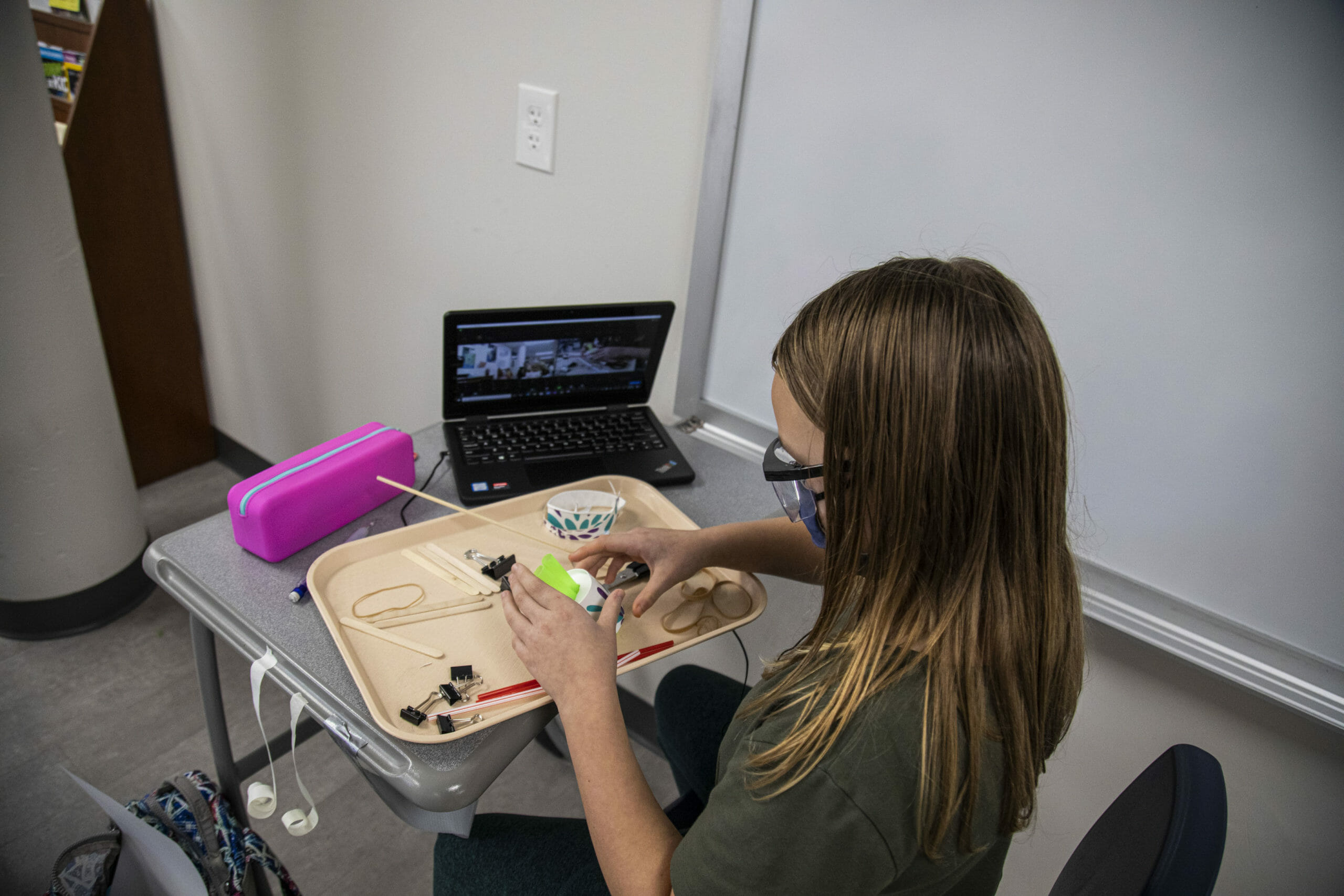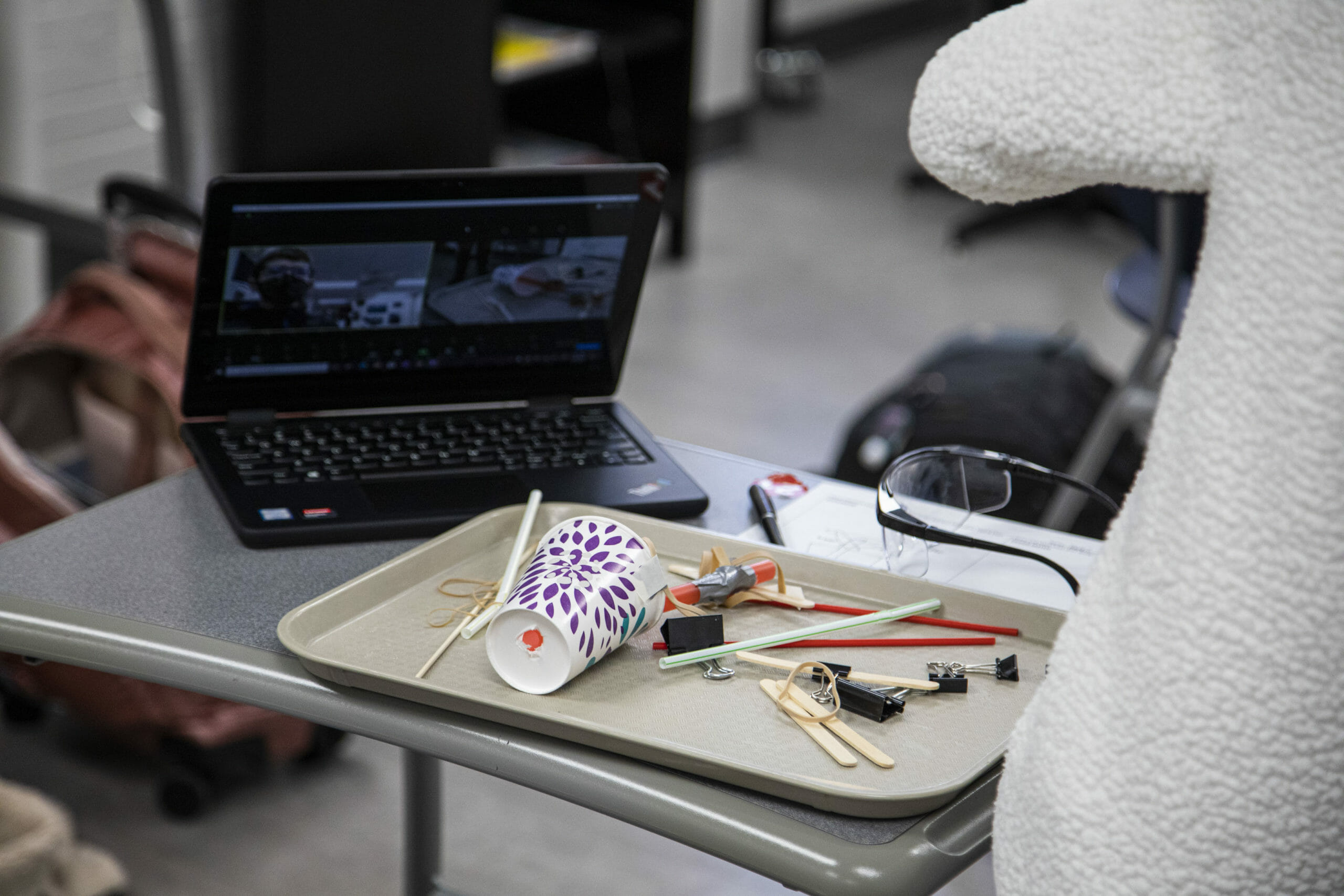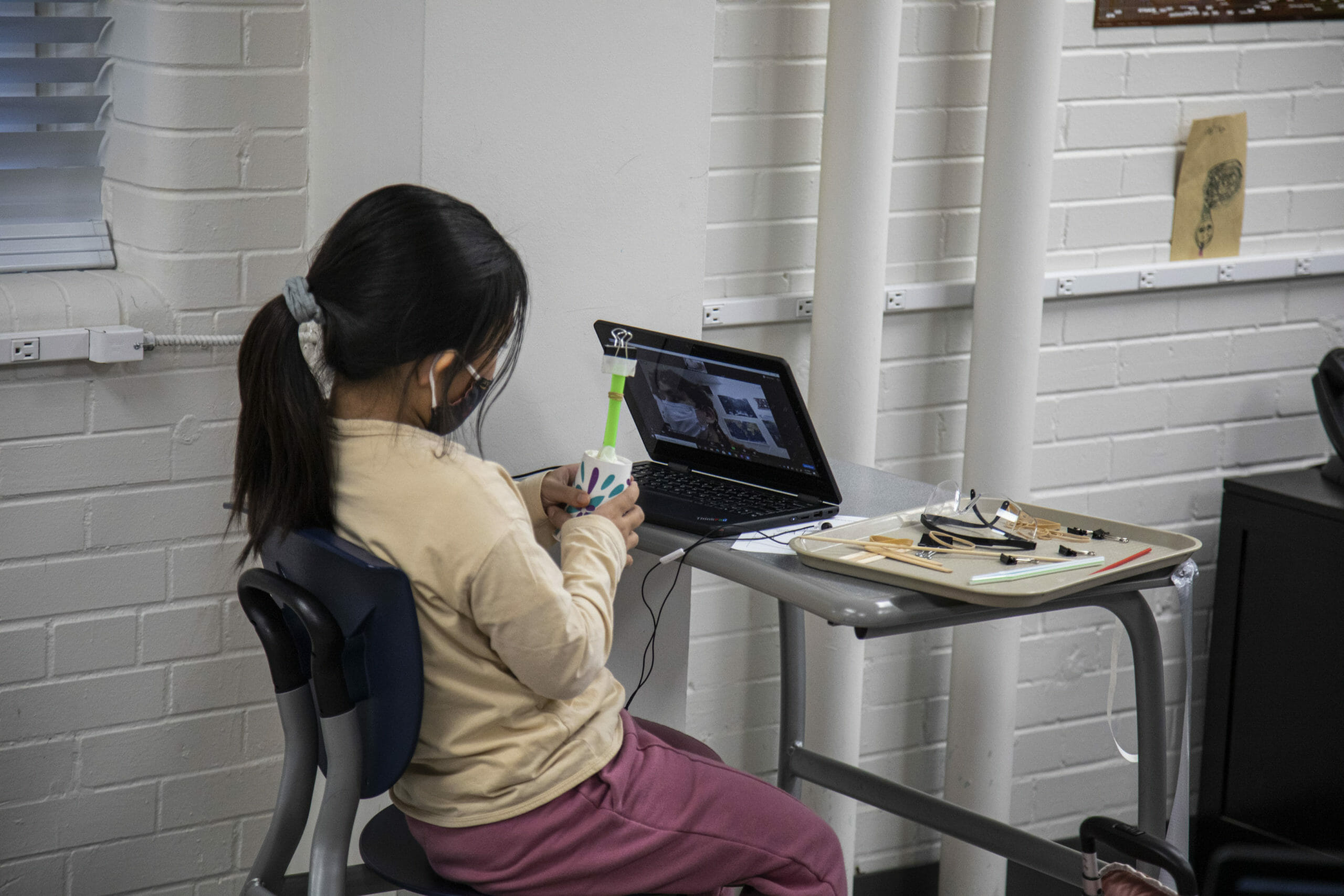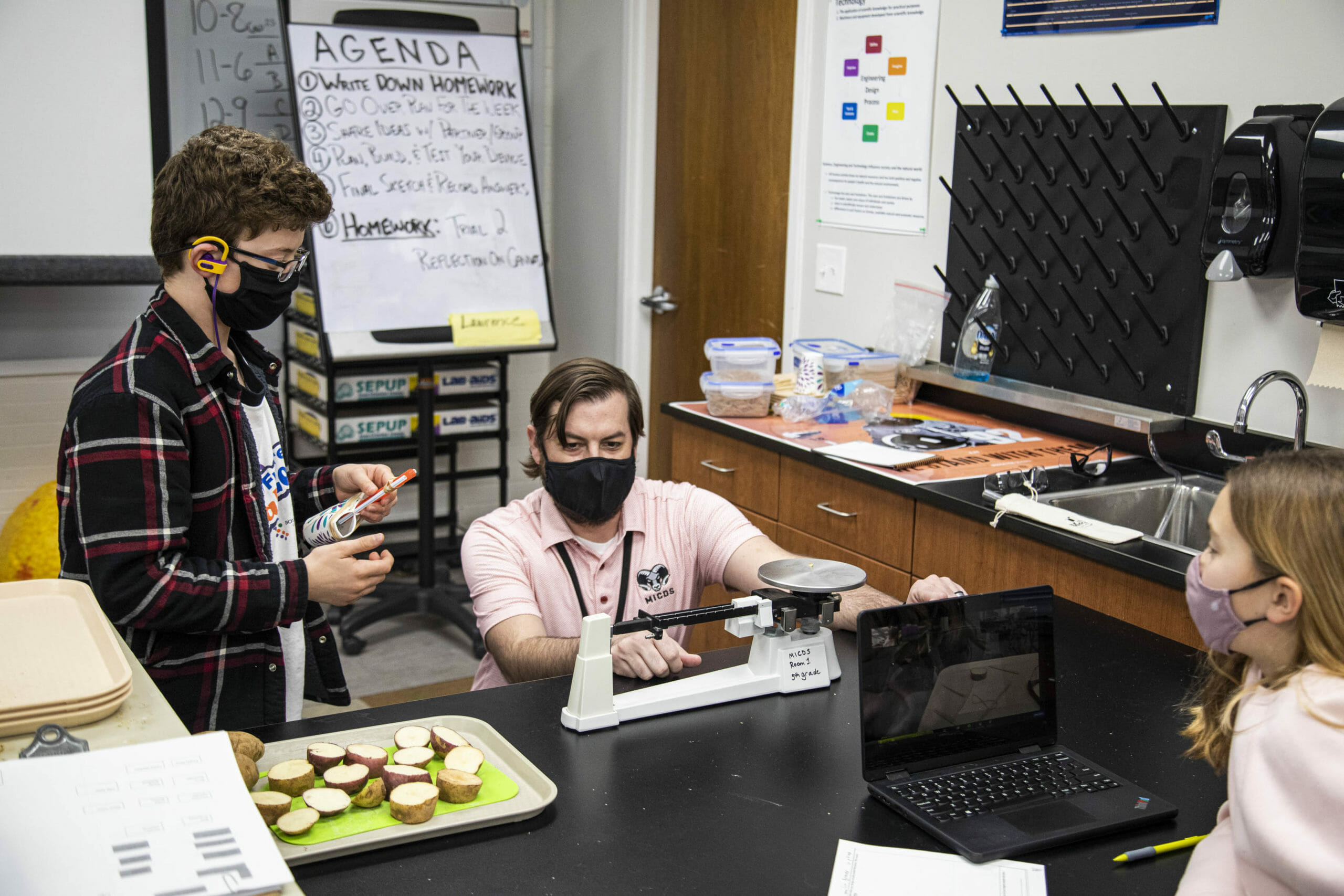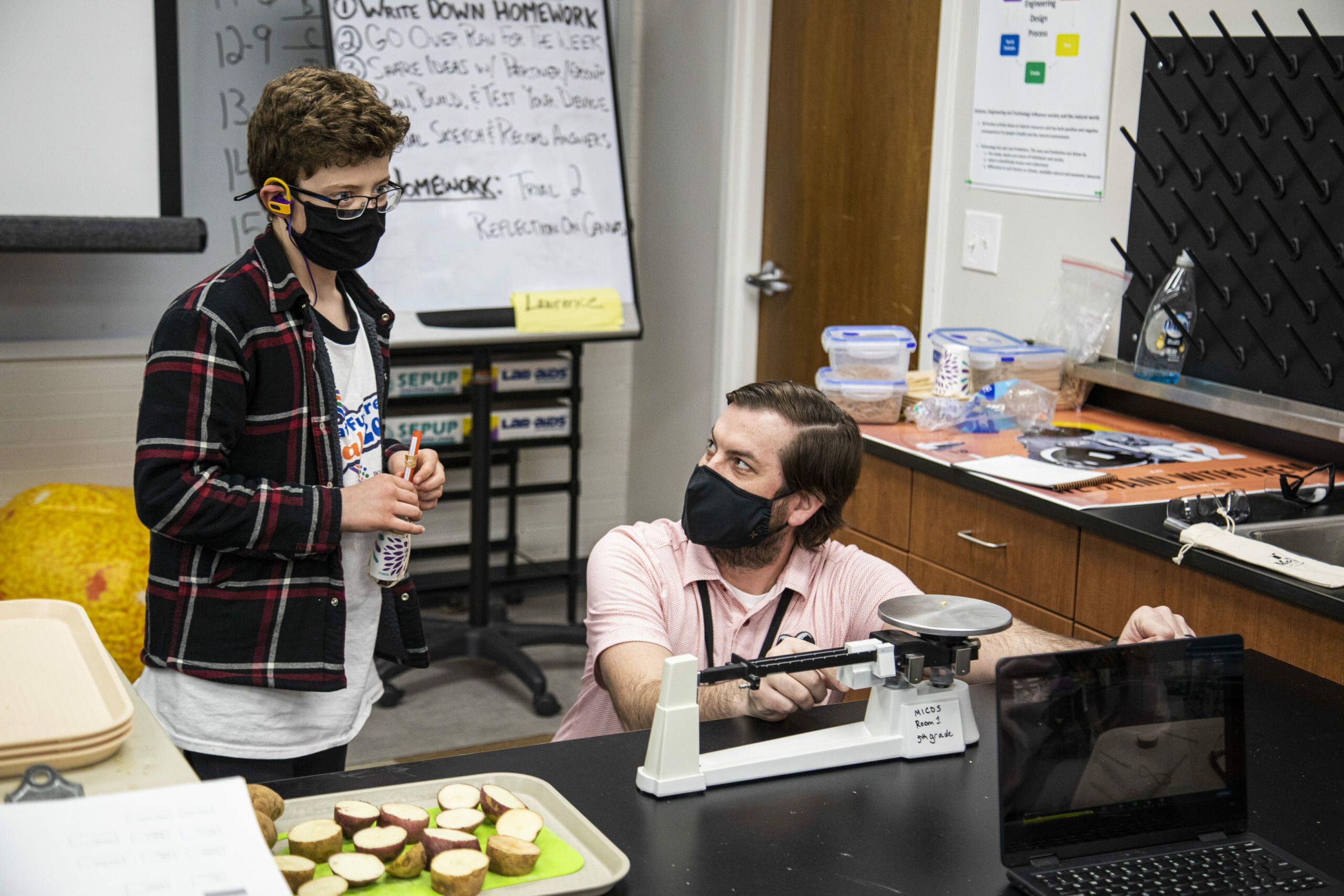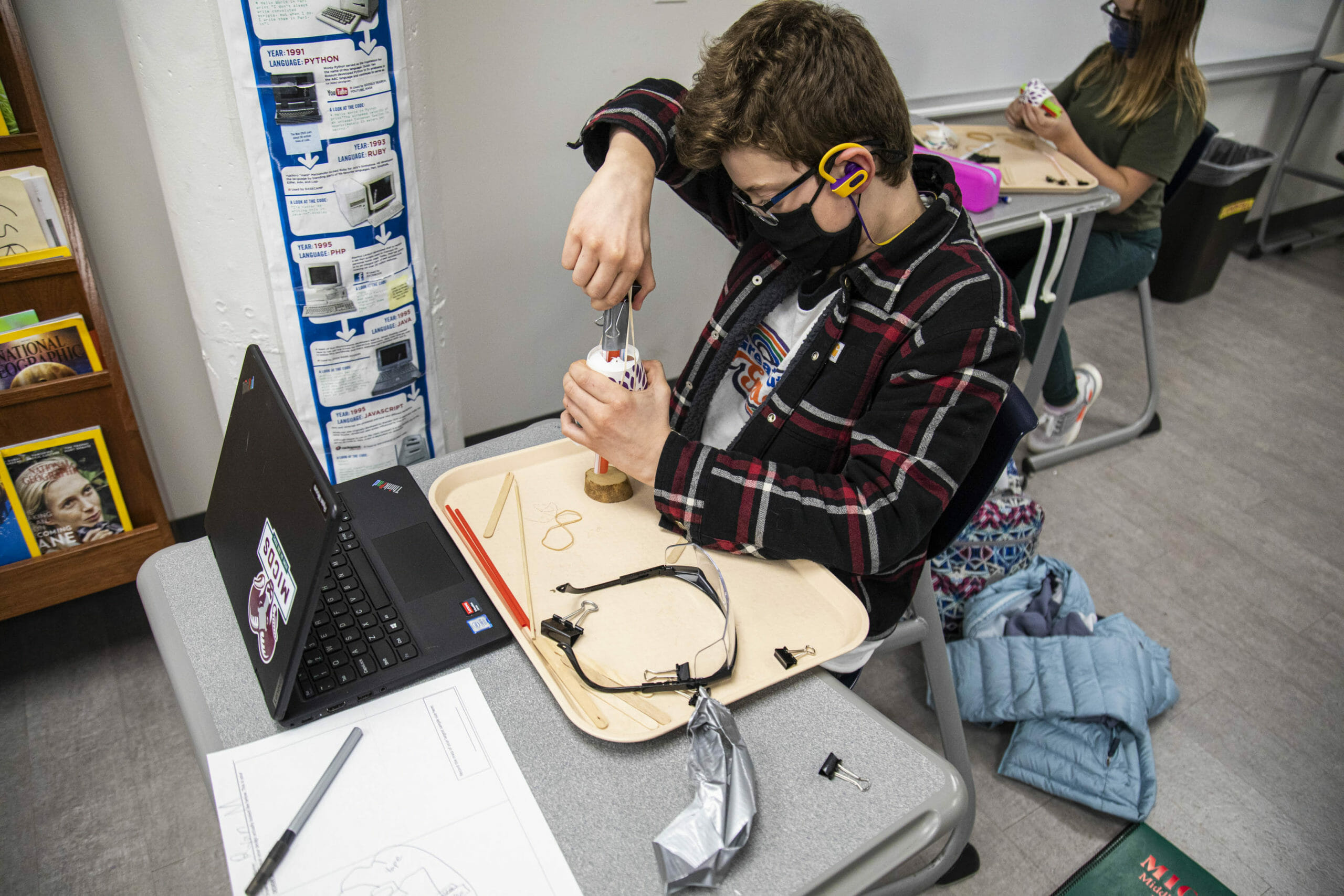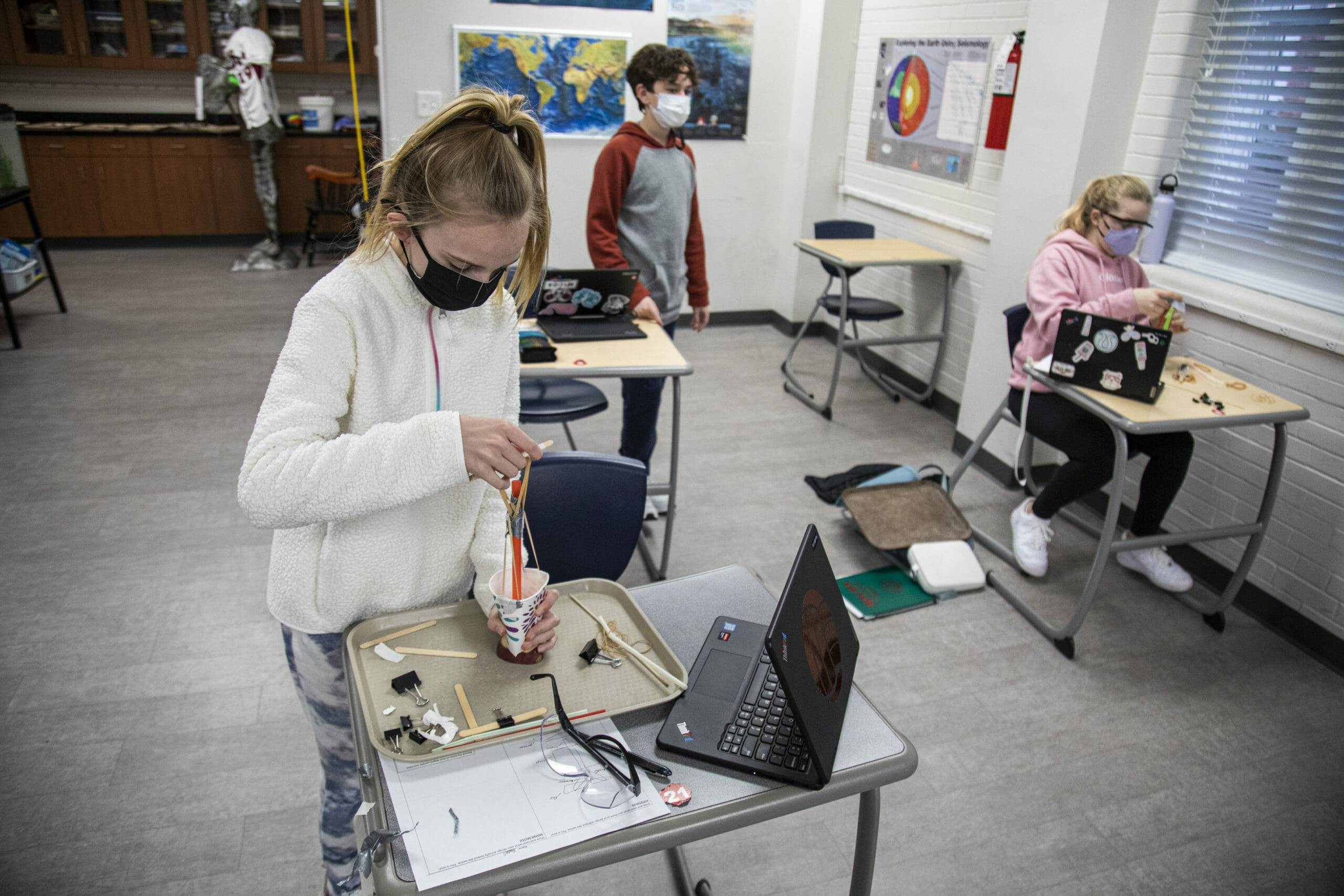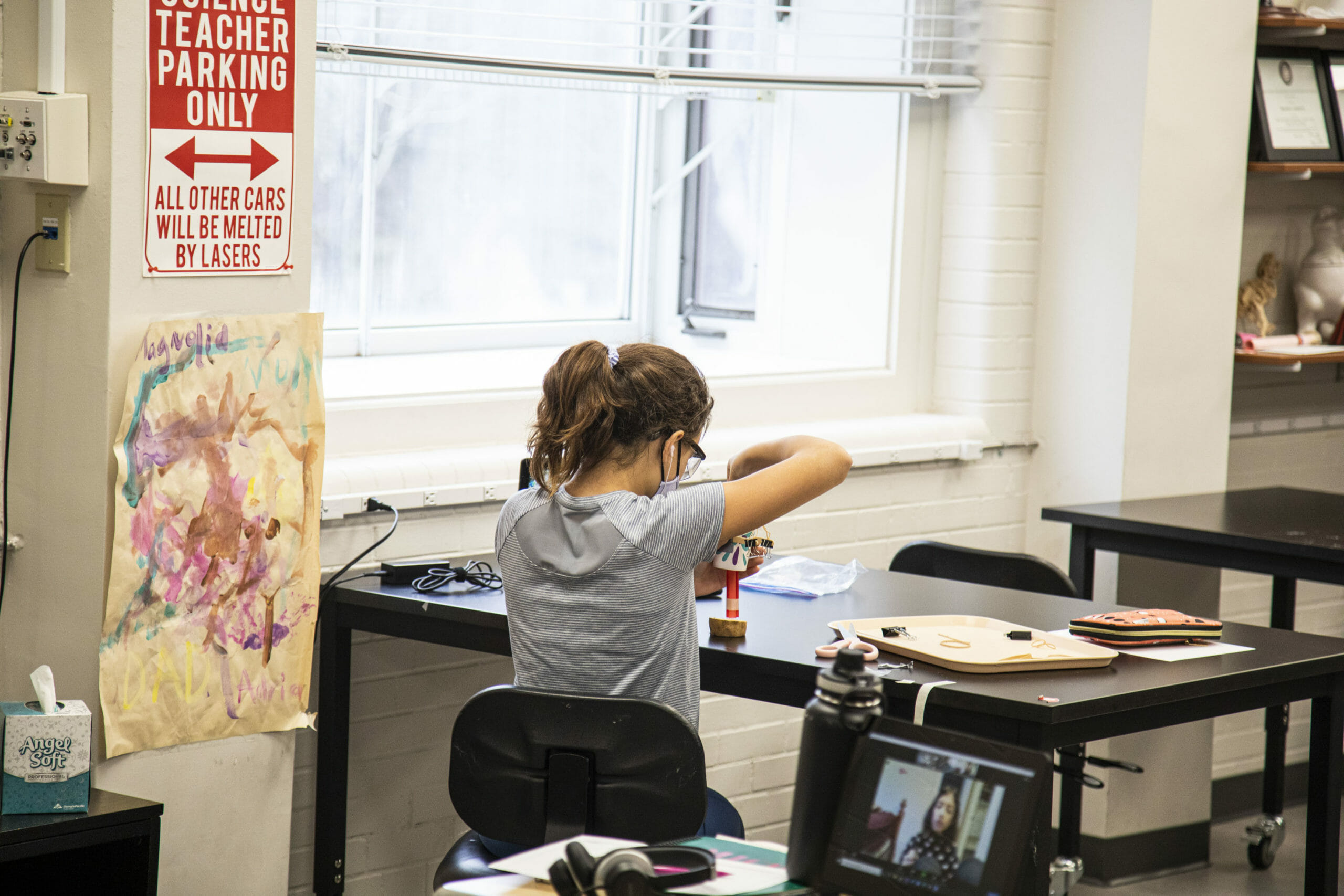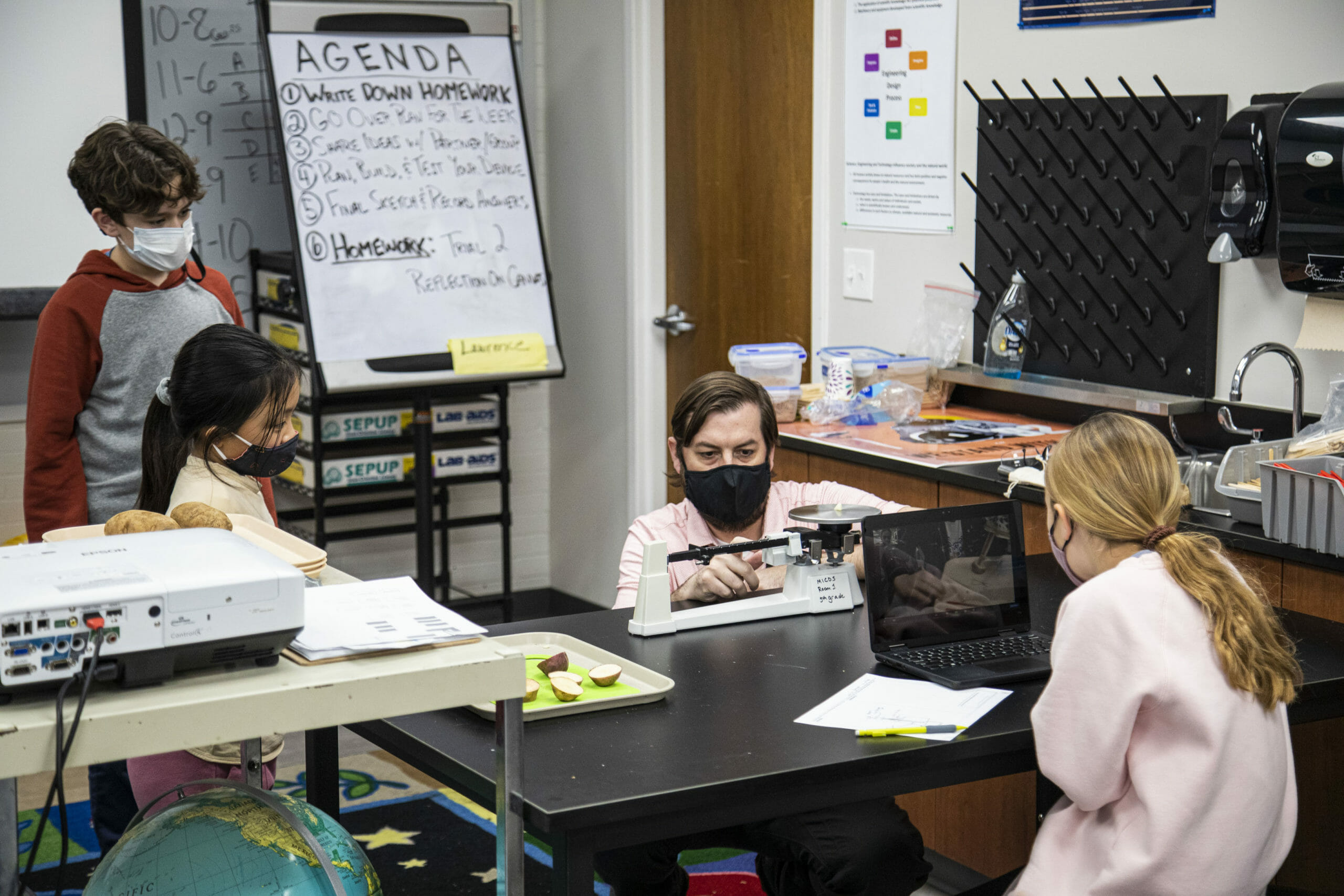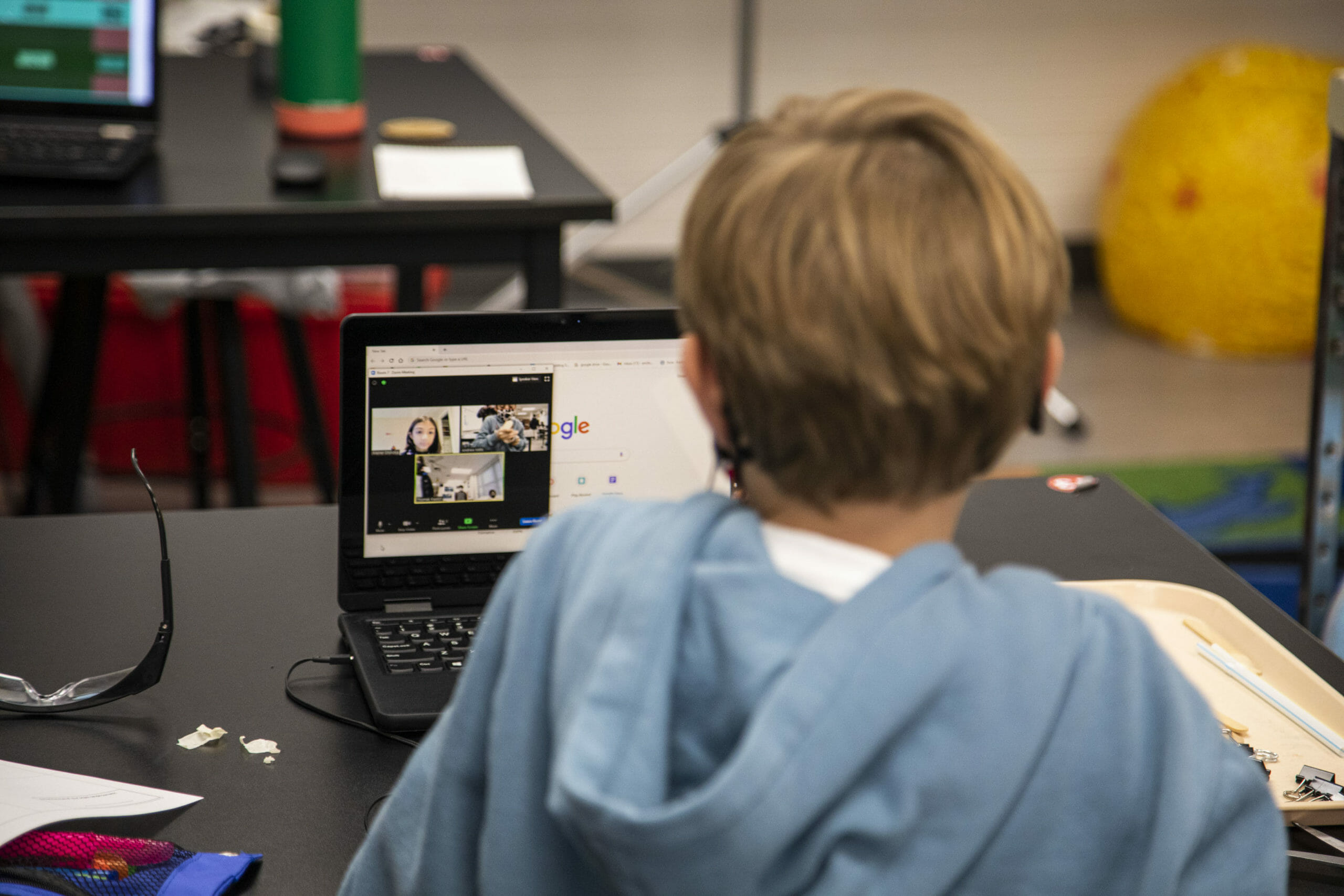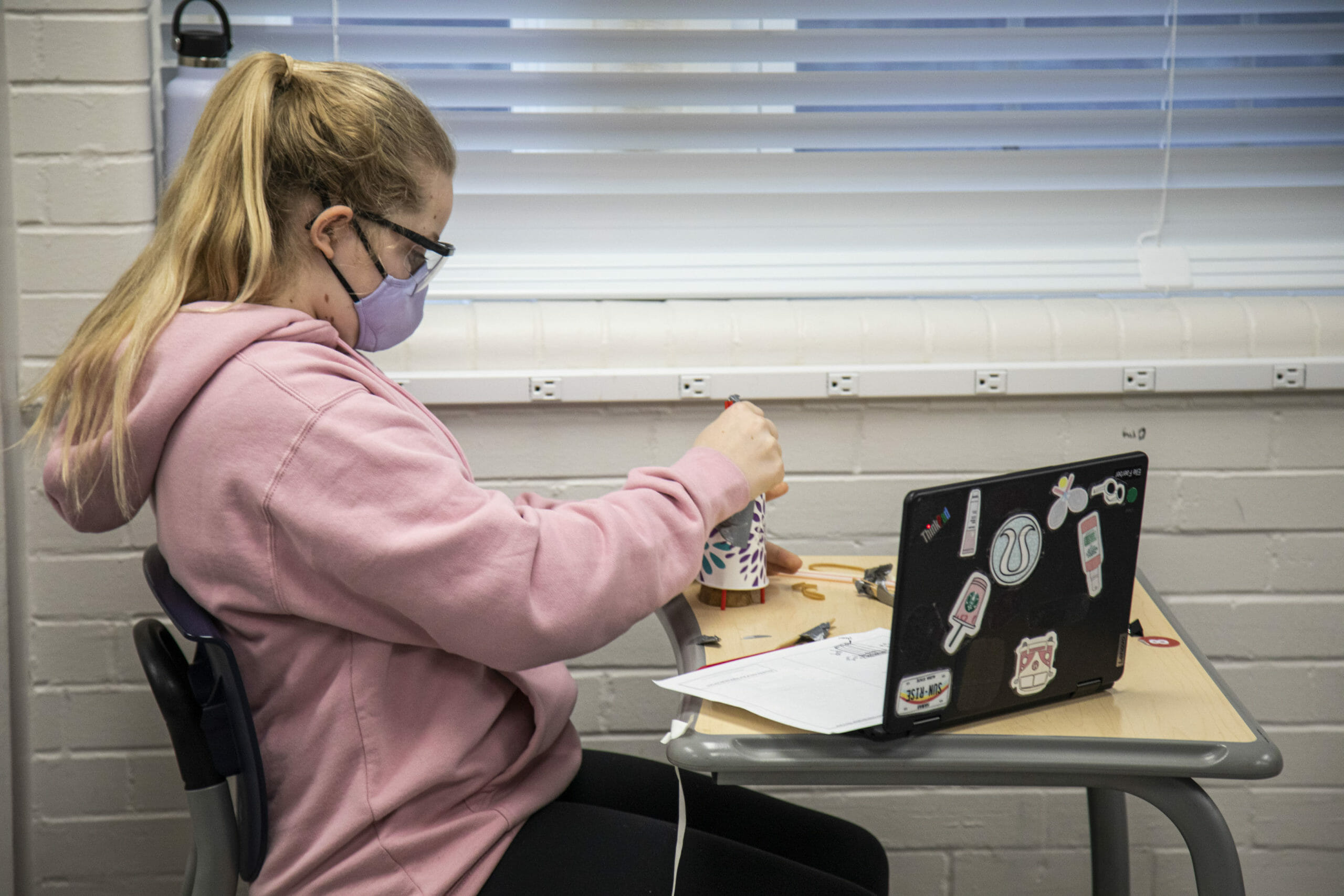Middle School Science Teacher Branson Lawrence presented his 5th graders with an engineering mission this week to collect core samples from an asteroid! Since people aren’t yet able to travel to planets and asteroids to pick up samples themselves, NASA sends spacecraft and rovers to accomplish this feat. The Curiosity Rover sent to Mars, for example, has a drill on the end of a robotic arm that collects samples. The samples are studied by scientists to see what conditions were like at the beginning of our solar system.
Bringing this idea back down to Earth, our 5th grade scientists designed their own asteroid sampler machines. With a potato for an asteroid, they got to work on building their machines with the use of straws, elastics, binder clips, popsicle sticks, skewers, and cups. Their machines were tasked with collecting core samples from the surface of the potatoes. They had to figure out how their sampler machines could store potential energy to be released as kinetic energy, driving their straws into the core of their potato asteroids. The activity also helped students engage with the practices of engineering: collaborative planning, prototyping, testing, and redesigning to find the best solution possible.
«It is so exciting to see the students engage with these types of challenges where there is no one right answer. Their creativity really has a chance to shine!» ~ Branson Lawrence
«We did this challenge as part of our Astronomy Unit,» said Lawrence. «Normally this activity would be in groups of three or four, but we were able to adapt this by having groups of two, having the partners connect on Zoom in breakout rooms, and having two separate trials so that each person had a turn to build if they were at school. That way, students did not share materials and stayed separated. The partner who wasn’t building that day gave advice and watched the building process in the Zoom breakout room.»
After such a successful asteroid-mining lesson, it’s safe to say this mission was accomplished!
